Storytelling is timeless and integral to human culture. These stand-alone, photography- based images freeze and capture a moment of time, offering a bridge between modern day and historically poignant life. The rapidly receding history of our shared humanity springs to life through the lens-capture of old buildings, rusty machinery, and historical landmarks. The addition of costumed characters not only enhances the photographic cohesiveness, but allows a taste of yesterday.
The focus of this project is to capture different stories via the voices of single people, farms, families, small business and/or stories behinds historical locations. Also, it is to present different voices of people living on the Olympic Peninsula, connecting past with present day.
Totem Pole by Brick Johnson
I would like to begin by acknowledging that the lands on which we live and gather are the appropriated homelands of Indigenous Peoples. I want to express my deepest respect to those peoples past and present, including the Hoh Tribe, Jamestown S’Klallam Tribe, Lower Elwha Klallam Tribe, Makah Indian Tribe, Quileute Tribe, Quinault Indian Nation, Port Gamble S’Klallam Tribe and the Skokomish Tribe, for their care of these lands throughout the generations. I honor with gratitude the wealth of spiritual and physical resources they are suppling and protecting for our community.
Rosie Zwanziger. Jamestown Tribal Artist. (recorded interview)
Rosie on the beach in front of her house
"I have dabbled in art all of my life, for as long as I can remember. I live on the beach in Jamestown on property purchased and settled by my great-grandfather, Joe Johnson, in 1874. My home is sited on the precise spot my great-grandfather built his home and where his children and grand-children, my mother and her brothers, grew up. My frontal views are of The Straits, The Dungeness Spit and Lighthouse, the San Juan and Mount Baker, Protection Island, and the Cascade Mountain Range.
Arial view of The Straits and the Cascade Mountain Range.
A half mile from here is our Jamestown Tribal Cemetery, where most of my maternal ancestors are buried. On the beach, mere yards from my home, is the Happy Crab Shack, designed and painted by my uncle, Brick Johnson, and which is the subject of one of my most popular watercolors. A couple miles southwest of me is the original road leading to Jamestown.
Arial view of the Olympic Mountains from the Jamestown Tribal beach.
Who says, 'You can’t go home again?' No matter where my professional life took me, I always knew I would come back to Jamestown in retirement. Most of my Johnson family relatives live nearby, and it’s a comfort to know that most of my maternal ancestors are close, buried in our Jamestown Tribal Cemetery a half mile away. I am in my element here, deeply rooted, like the walnut tree in my back yard.
Johnson Family left to right: Sandra Johnson, Shawna Priest holding Grandson Jameson Carver, Josh Carver, Terry Johnson, Steve Johnson, Rosie Zwanziger, Jessica Johnson, Vickie Johnson-Carroll, Sonni Creech, Jolie Creech, Susan Johnson, and Verna Johnson.
Since 2001, I have taken a number of classes in a variety of mediums: stained glass, colored pencil drawing, driftwood sculpting, wire-wrapped beach glass jewelry making, Native bead working, wood carving, cedar bark weaving, and Salish design among them. In the last six years, it’s been watercolors that have held my interest. My inspiration comes from my favorite things, places, experiences, memories—things that are beautiful or meaningful to me or bring me joy. I am also drawn to the character and texture of wood—gnarly trees, driftwood, weathered buildings. Although it’s such a cliché, it is so true for me: The beauty of the natural world and my sense of place and peace are found here where I live inspire me every day."
Step back in Time. Old Dungeness Schoolhouse.
Old Dungeness Schoolhouse.
One of the things I love about photography is the ability to capture historical heritage. The rapidly receding history of our shared civilization returns to life through my lens as I photograph old buildings, rusty machinery, and historical landmarks. Adding costumed characters to my shoots not only enhances the photographic cohesiveness, but also allows my models a taste of yesterday. The main concept is to portray and enjoy these special locations, costumes and stories, while sweeping the viewer down the road to the past.
The Dungeness School is a historical schoolhouse building located in the old township of Dungeness, Washington. The school was conceived in 1892 by the settlers of the Dungeness area. On May 10, 1892, a meeting was held in which settlers created a bond for land and a two-story school house. The school house opened on February 27, 1893.
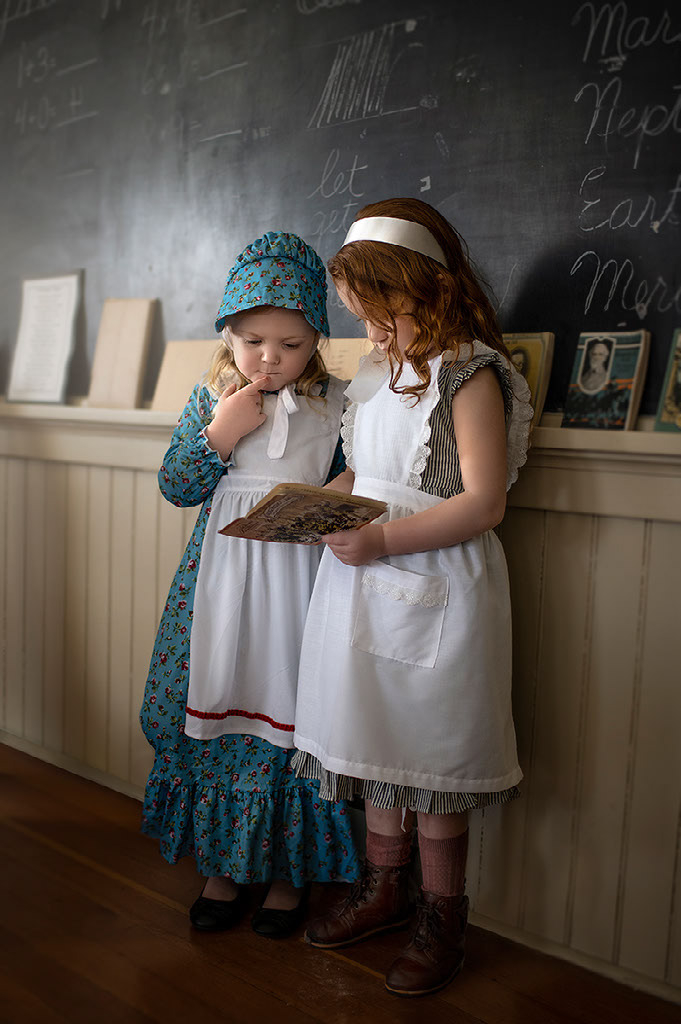
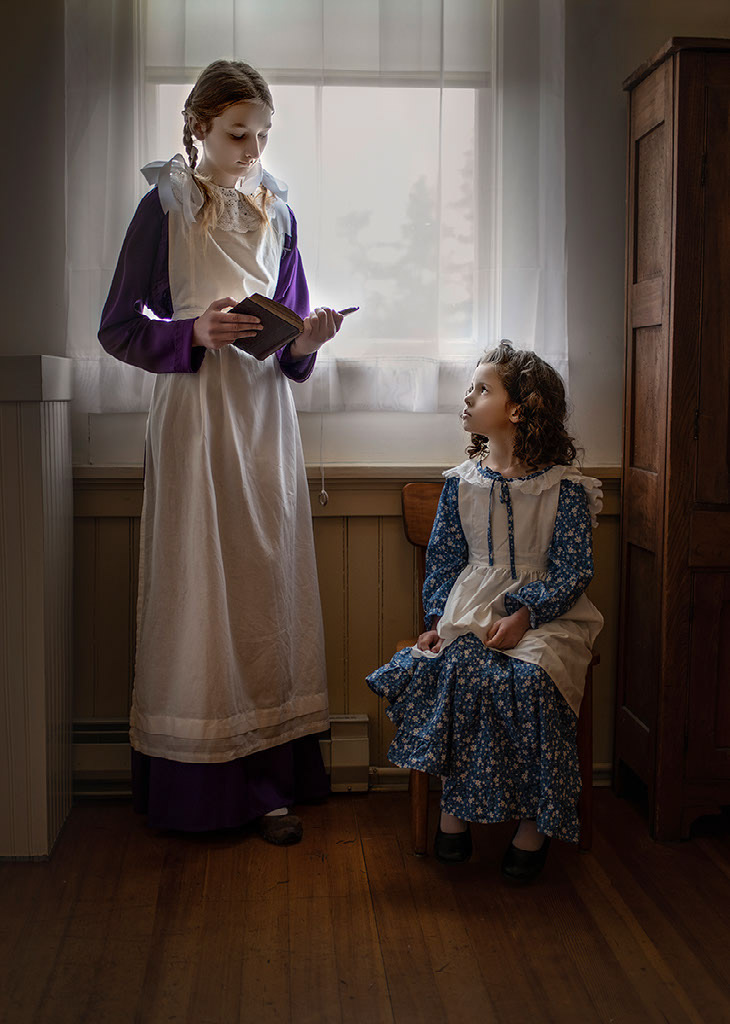
The school originally had 73 students from the ages of 5 to 20. Teachers were required to educate students of various ages and abilities. Older children would teach younger ones, helping out the teacher, and giving the younger classmates the benefit of their knowledge.
The majority of these early schools had a single teacher, pot-bellied stoves, and a wood pile. At the front of the classroom would be a large wooden blackboard mounted to the wall. Close to the teacher's desk would be a free-standing wood (or coal) stove giving off a cheery heat during the cold winter months. The blackboards were hung on the front walls along with a few pieces of chalk with which to write the lessons of the day. The desks were small, and sometimes supplies and even books were shared. Classes were taken in the "three R’s" (reading, writing and arithmetic). Girls were generally taught sewing and needlework, as well.

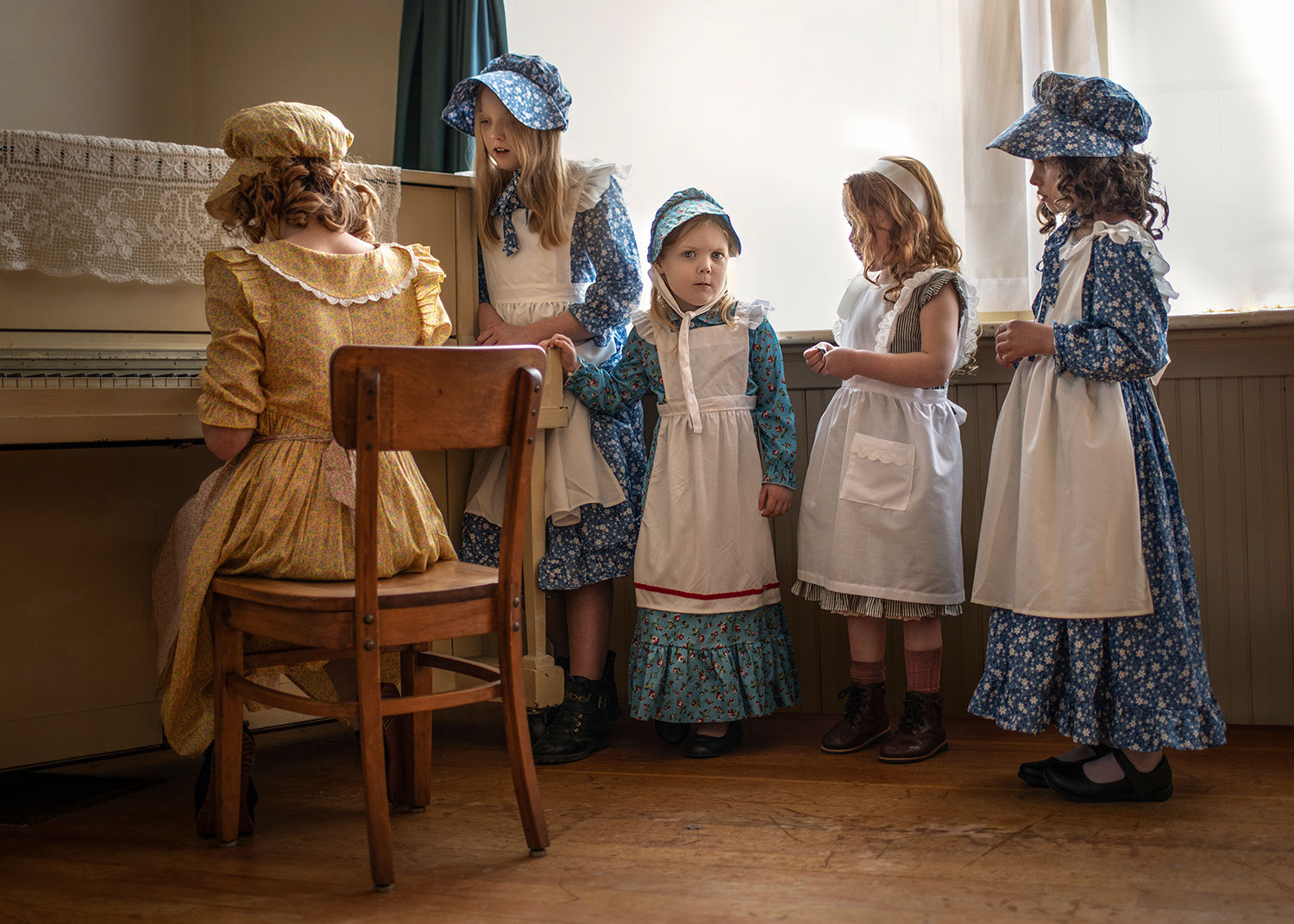
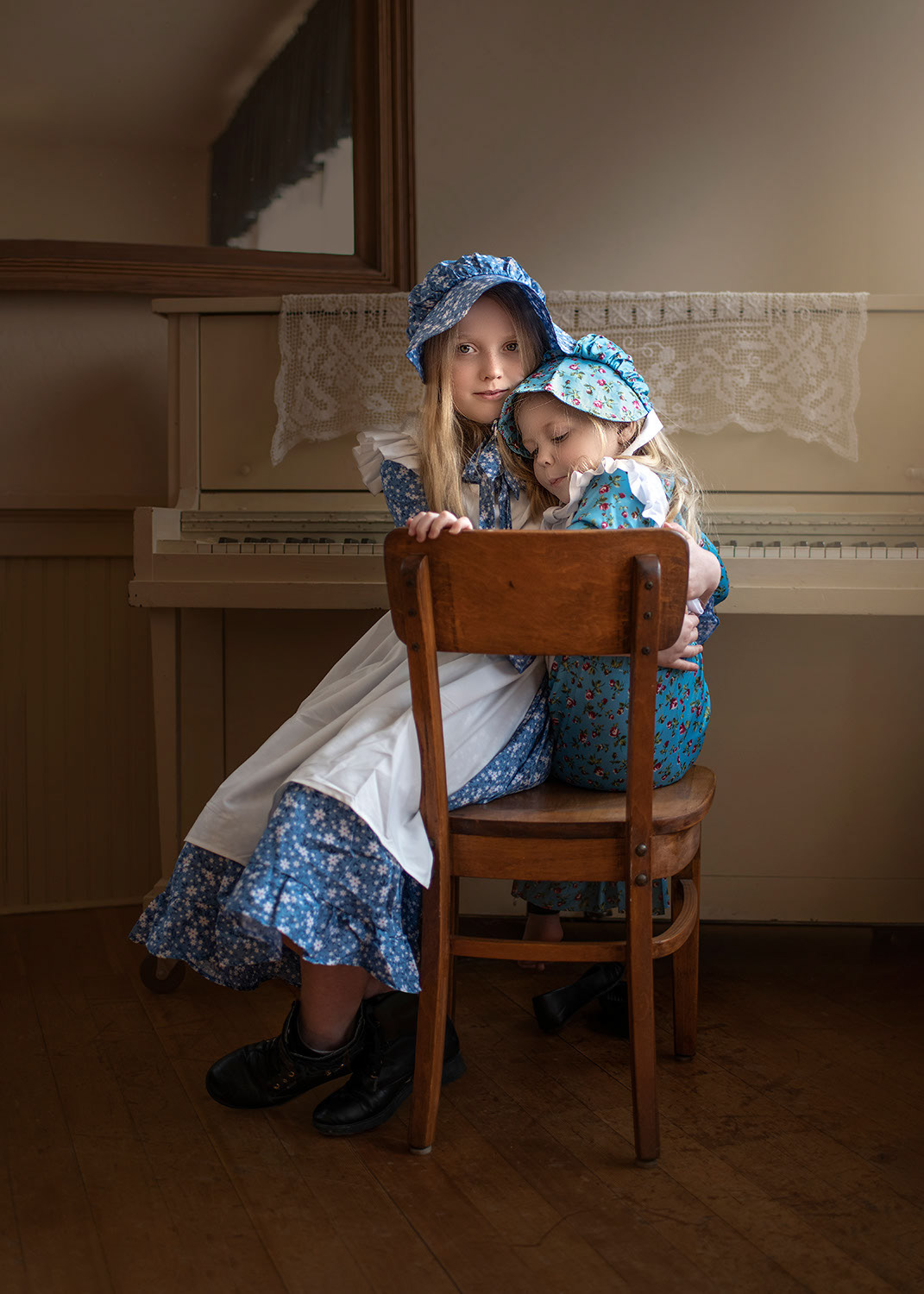
In 1955, the Dungeness and Sequim School Districts were consolidated, and the old Dungeness School was closed. Over the past years, I have had the pleasure and privilege to teach a variety of art and drawing classes at the old Dungeness schoolhouse. I used the chalk boards, walked the creaky floors and absorbed the ambiance of antiquity, connecting me to the ghosts of previous teachers.


The Color of Lavender.
Sequim lavender field.
Something mystical and picturesque happens on the Olympic Peninsula for a short season every summer. The lavender fields burst into a colorful, harmonious bloom, creating a visual explosion of hues and fragrant aromas.

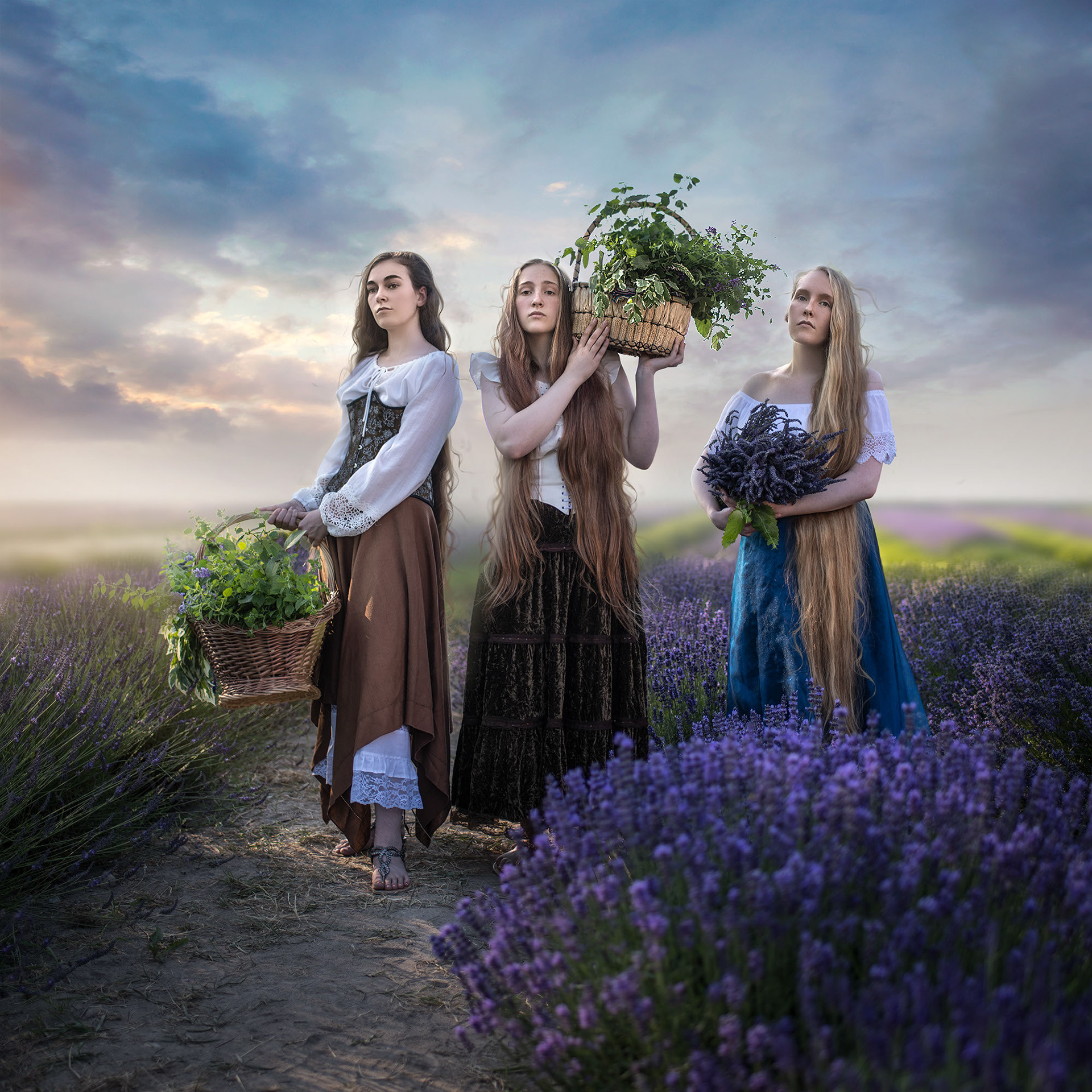
Living in the Sequim area and being surrounded by beautiful lavender fields, I thought it only appropriate to shoot some photographs of this beautiful flower, and form it into a story. I call this story, “The Color of Lavender," but in truth, there are many, many shades and hues of lavender and just as many fragrances. Before living in Sequim, I saw lavender as just a color. Now, after experiencing the vibrant blooming of this perennial purple flower, I see lavender as so much more than simply a color. The aroma of lavender and the variety its hues blend together and flow with the landscape for as far as the eye can see.
The lavender fields in Sequim have been brightly blooming since the mid-1990s. Originally, there were just a few farms scattered around the valley. Even as the area became dotted with homes, small farms began to turn to lavender as a cash-crop. This small beginning soon grew into an international festival of tourist attractions. The Sequim-Dungeness Valley, with its Mediterranean-type conditions, is perfectly suited for lavender to thrive. The "rain shadow" created by the Olympic Mountains allows for the lowest annual rainfall in western Washington and is, therefore, perfect for lavender to blossom.
SisterLand Farms.
SisterLand is the space that embodies a vision of a better world, a space for the marriage of agriculture and restoration ecology, a space for diverse people to train in an industry burdened by homogeneity, a space for our community to come and find peace.
Recorded interview:
"We founded SisterLand Farms with a few goals in mind: To search out the myriad avenues connecting people to their food system, and repair what was broken there. To form a business model that would allow each sister to find and do work that was meaningful to them. To create a space for radical, unapologetic growth—of food, of people, and of ideas.
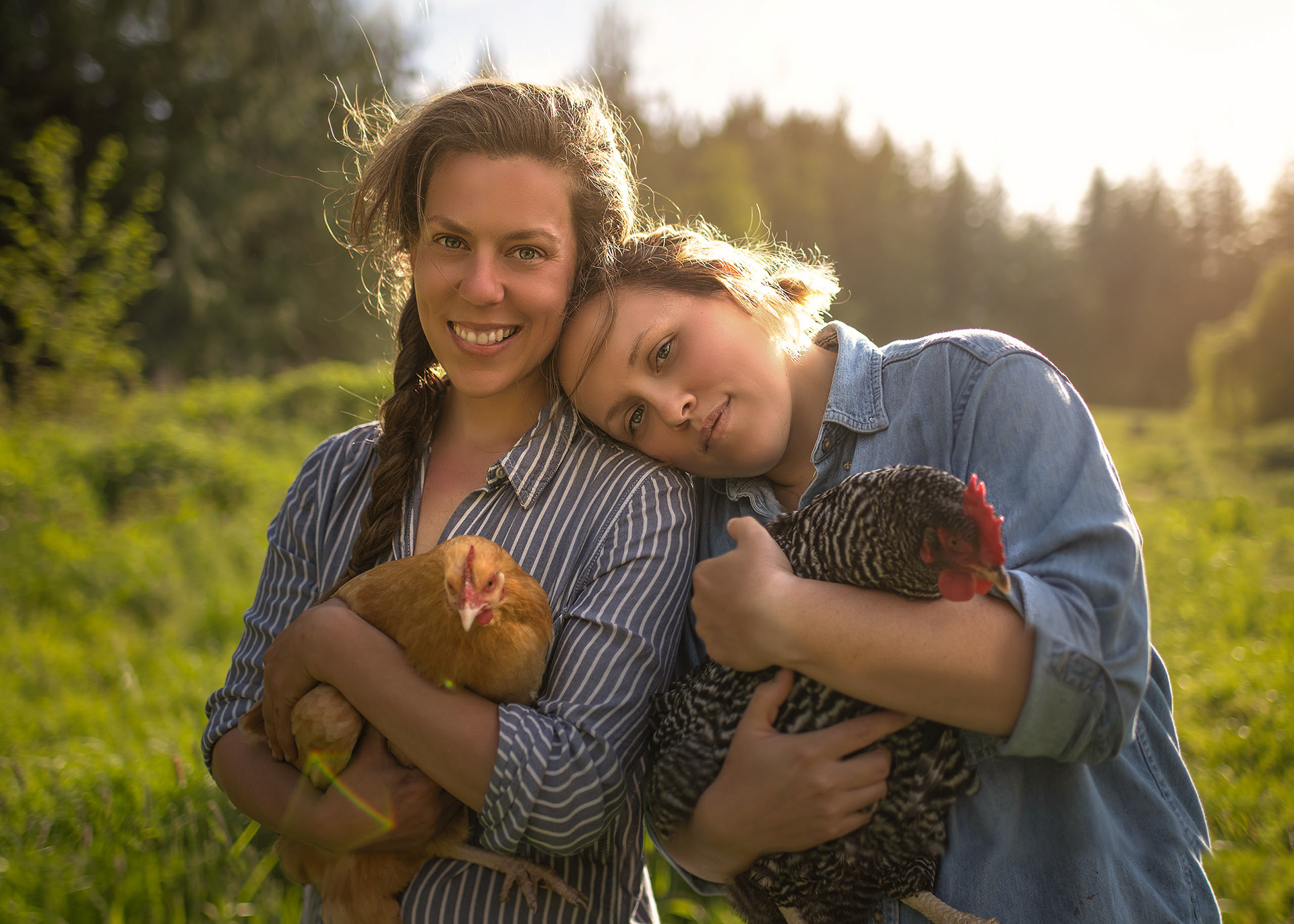
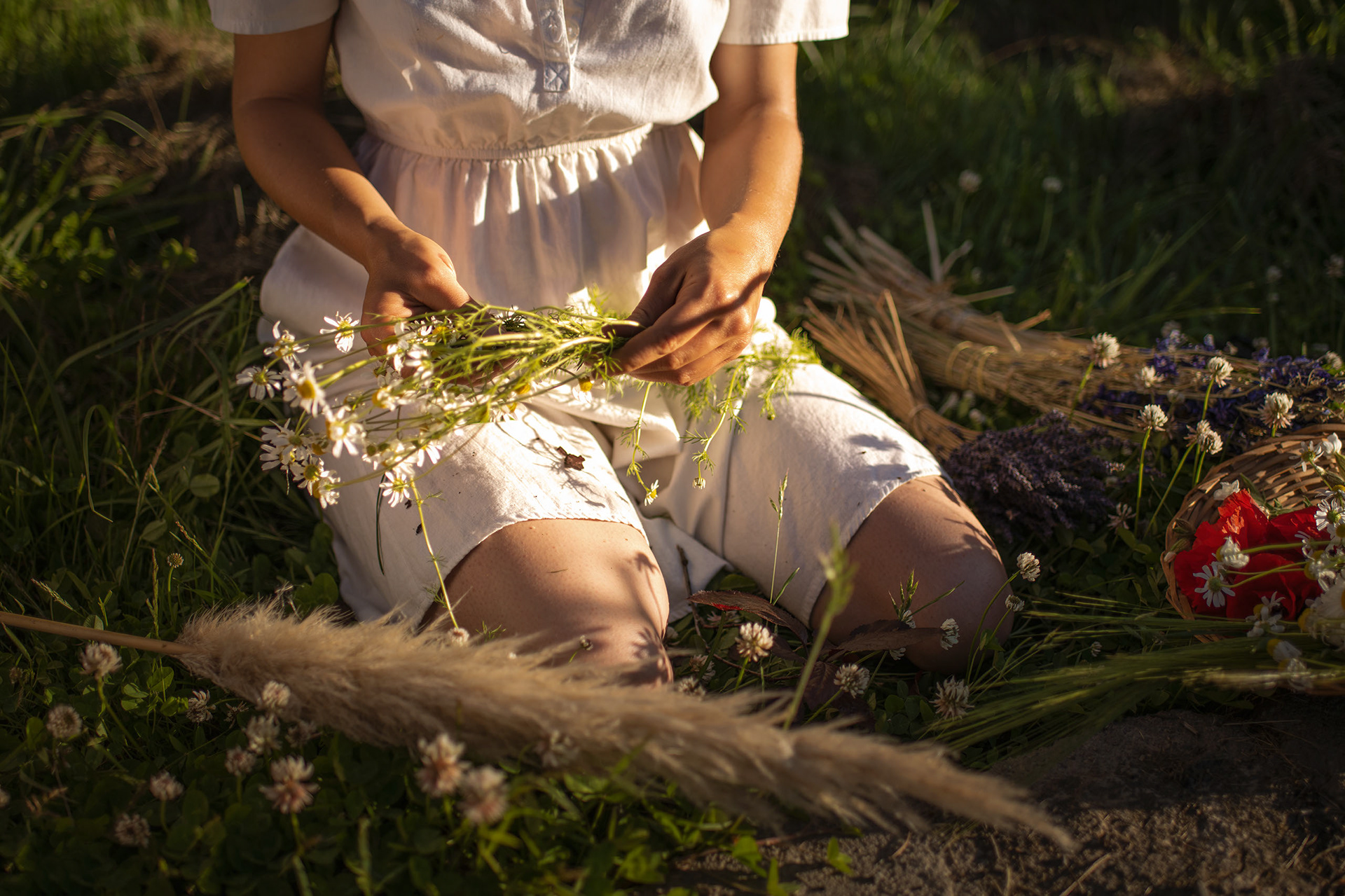
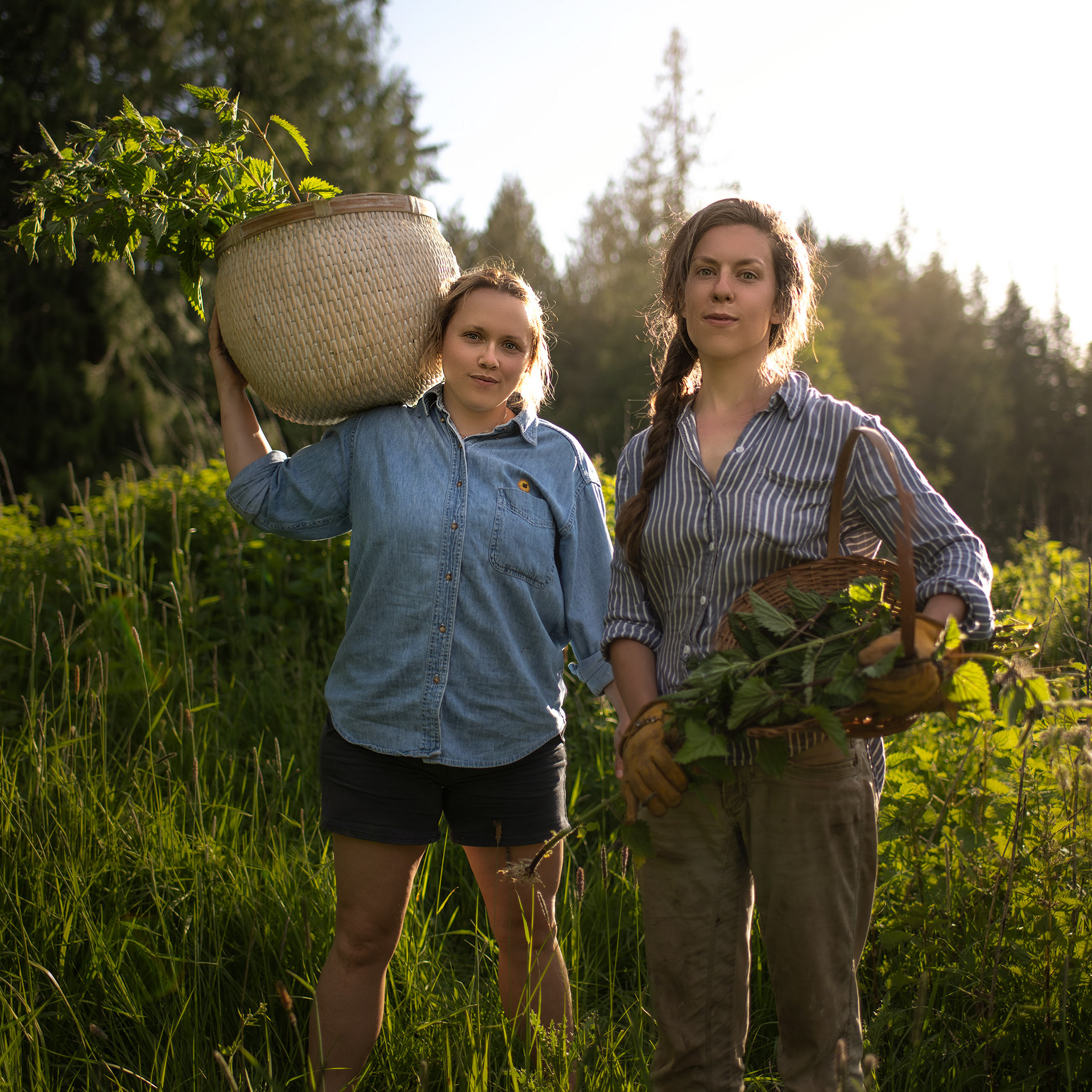
The farm launched in Autumn of 2018, and had its first “season” in 2019. I (Jenson) studied agriculture in college starting in 2004, and have worked on farms for eleven years as of 2021. The other sisters all have experience gardening, and some have worked with backyard poultry.
We’re less concerned about making a profit, and more concerned about revolutionizing the way people relate to their food system and land. Our mission is “Grow Radically.” Embodied within that mission is something enormous; our constant desire to elevate all discussions of land, water, infrastructure, community, animal life, and labor—and our willingness to try new methods of operation that can inform current and future businesses in this changing climate. We grow small-scale intentionally. Everything we do at SisterLand can be reproduced and scaled; from backyard gardens to homesteads to large-scale agricultural operations. If we grow too large, we lose some of that power, so it’s critical that we keep our operation modest.
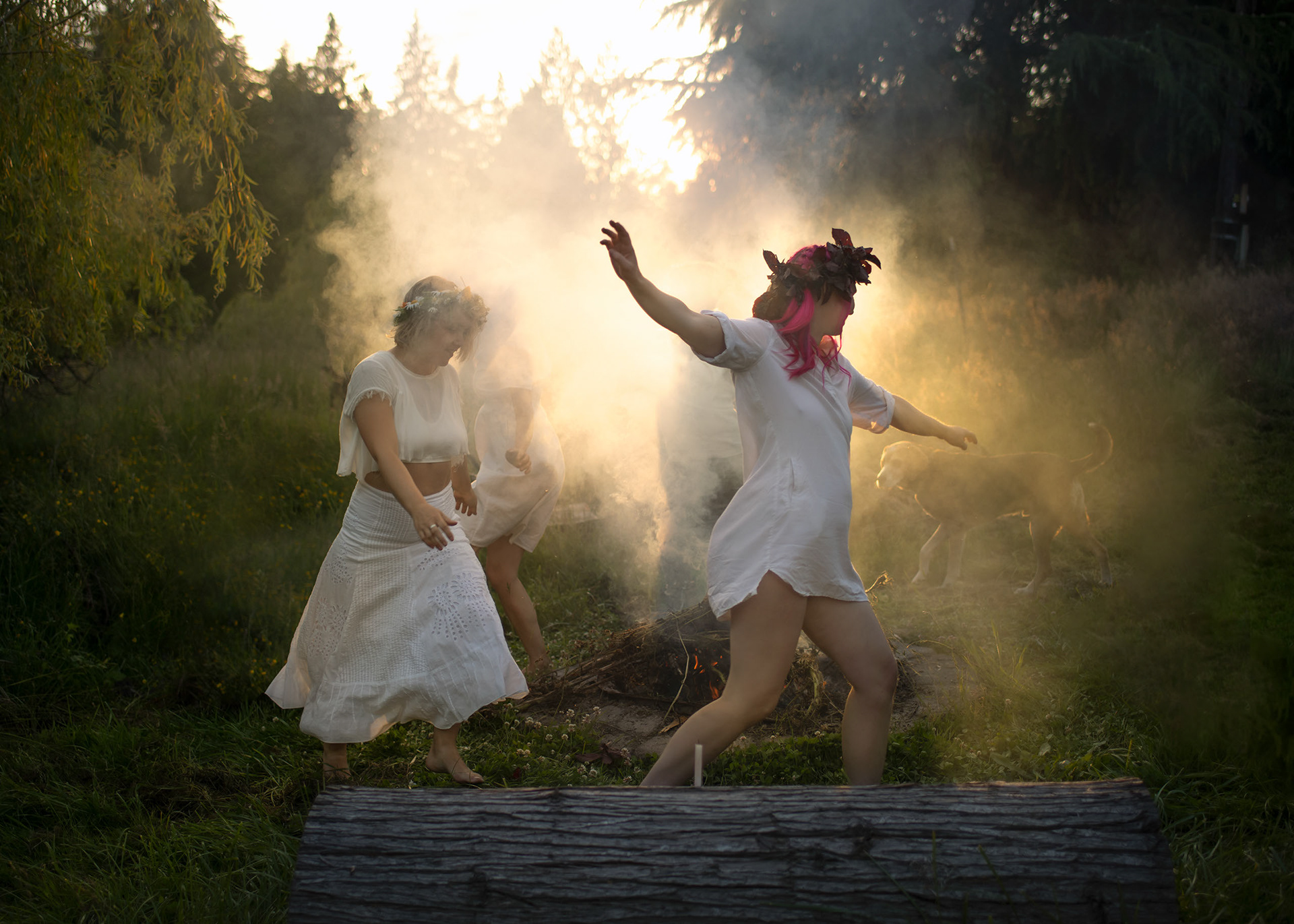
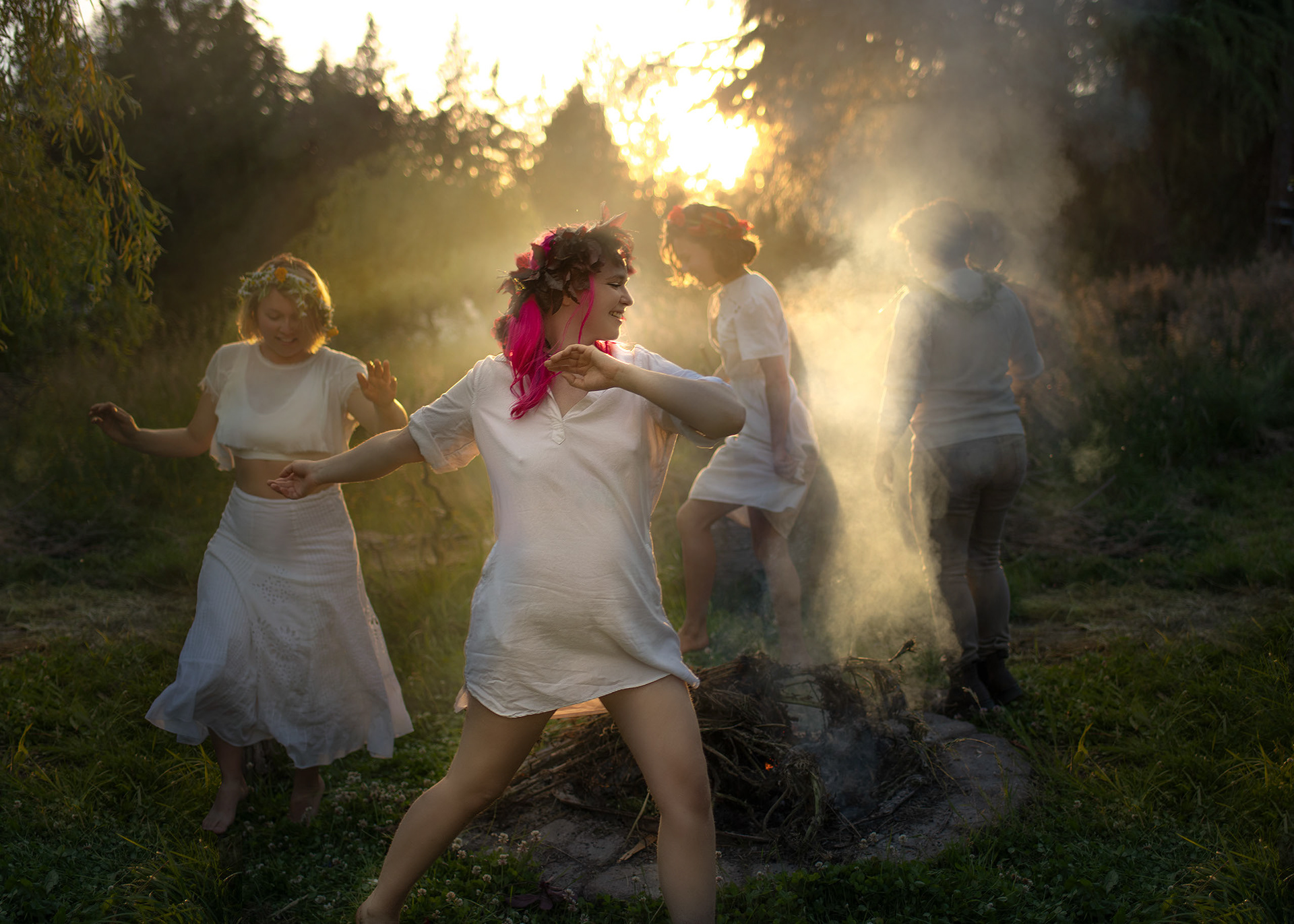
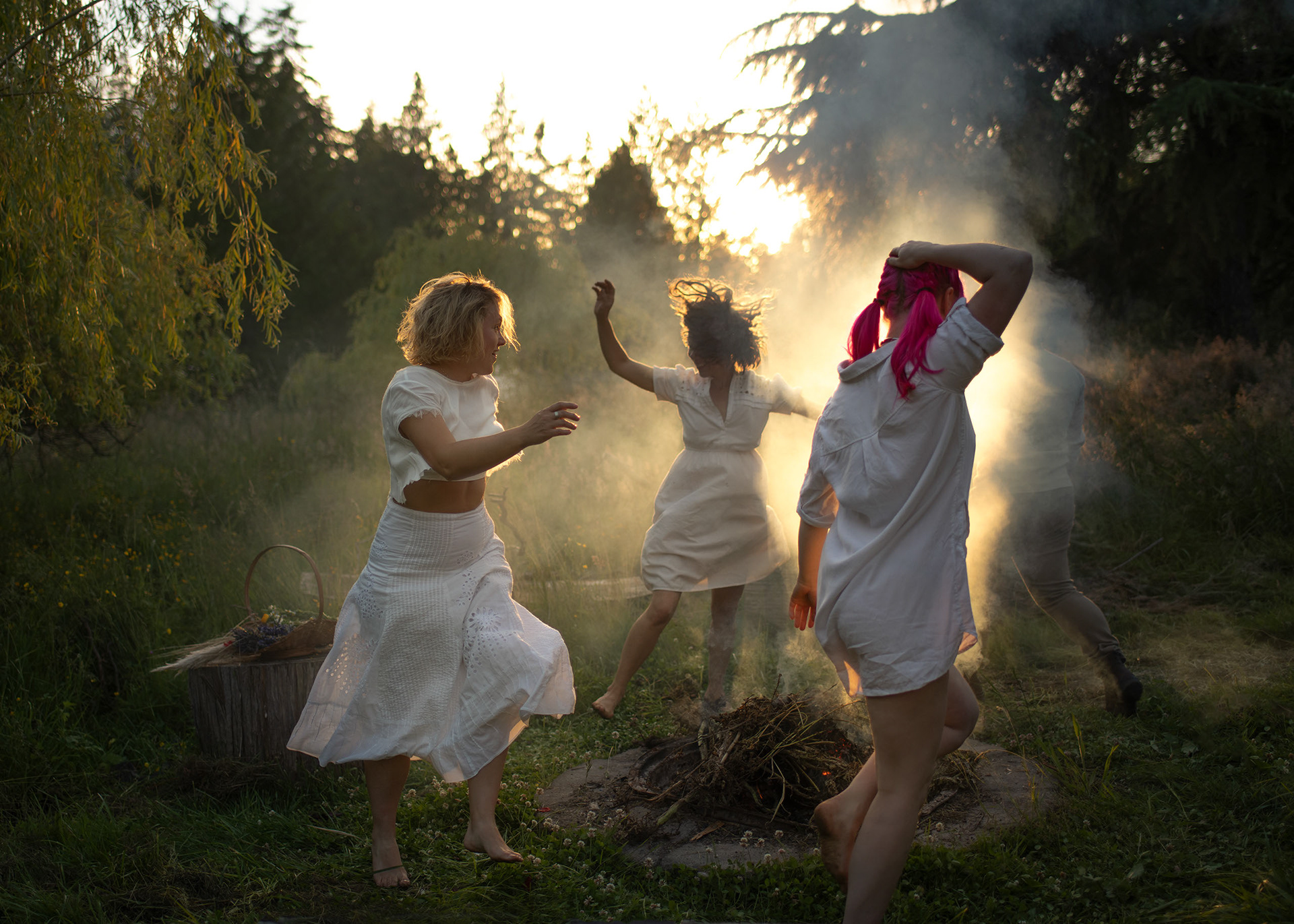
The property is an intersection of six strong-willed humans. Each of us are charged, opinionated, powerful, and flawed. The land reflects that. Each of us has a shifting, evolving, disintegrating, tightening relationship with our siblings. The land reflects that. The family pours itself into observation and care of the soil, plants, and animals and air on the property. The land reflects that, too.
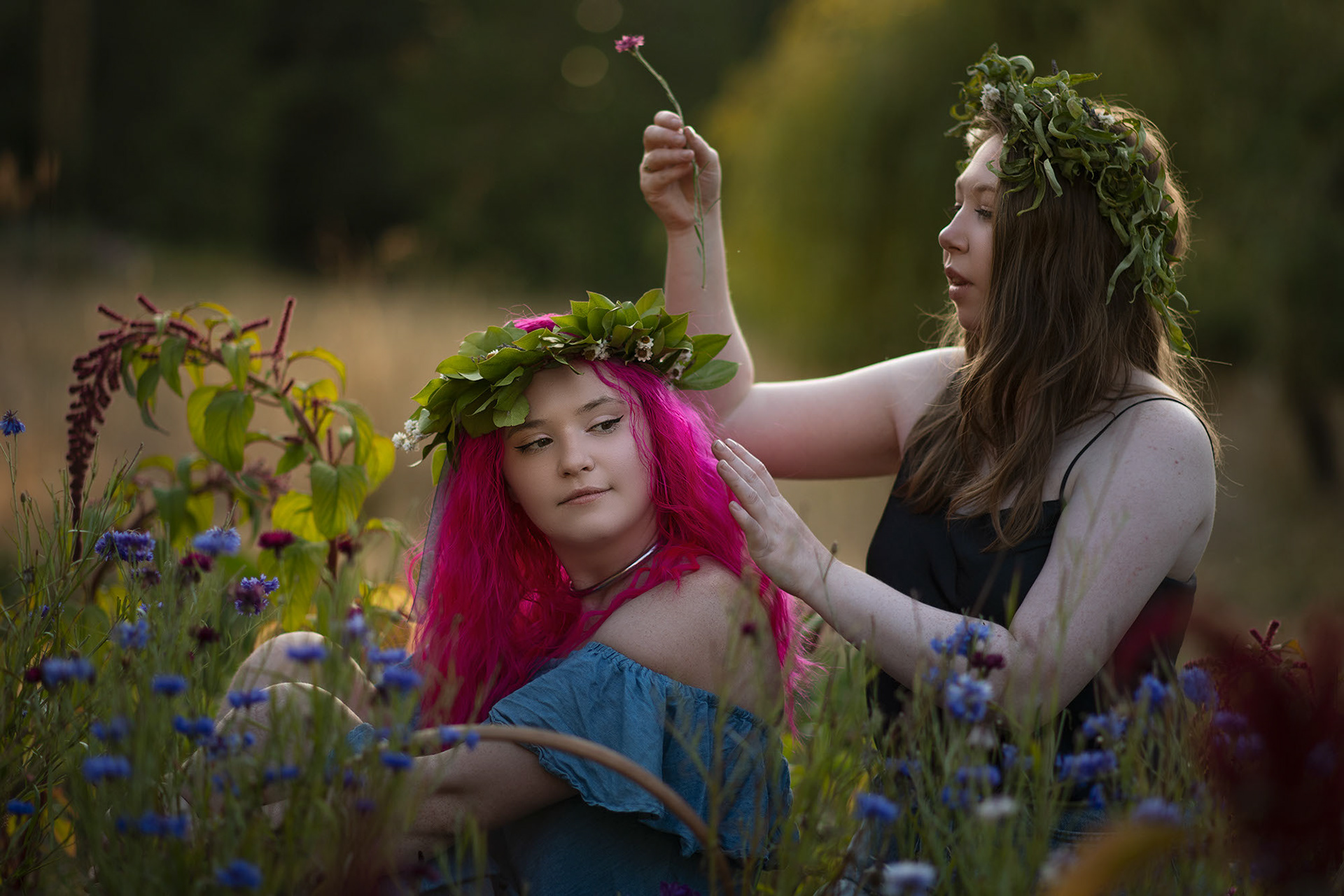
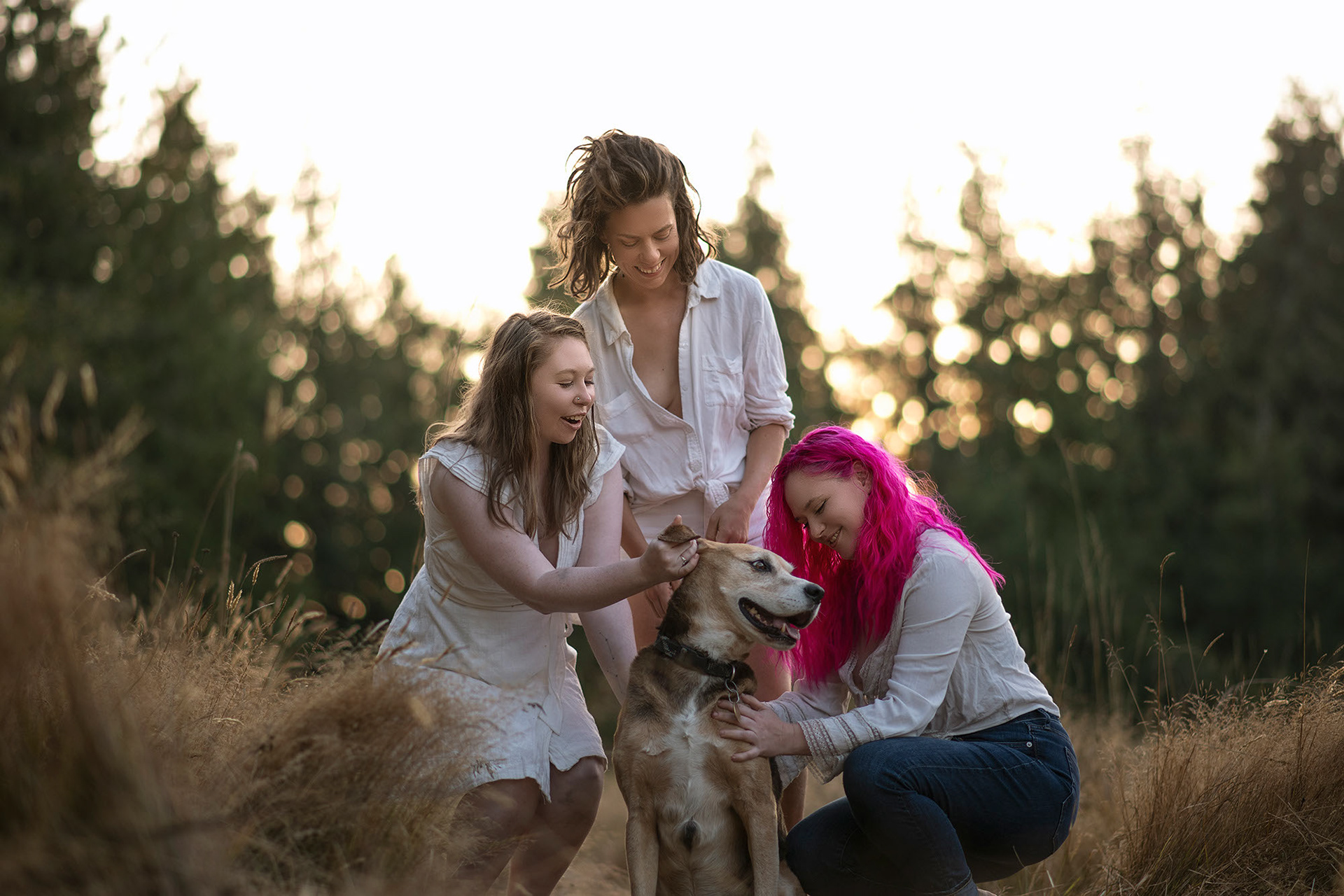
Each of us would have a different answer for this. I’m (Jenson) not sure, myself. It could be the epicenter of radical community and growth—or it could be another privatized/insular agricultural operation or homestead. Our next year of business will determine which direction the land tilts, I think—but of course I hope for the way of radicalism."
Farmers' and Artisans' Market.
The Sequim Farmer's & Artisan's Market offers beautifully handcrafted and tasty homegrown products, every Saturday from May through October. Here we can discover an eclectic display of many local vendors, live music, and a full calendar of events throughout the season.
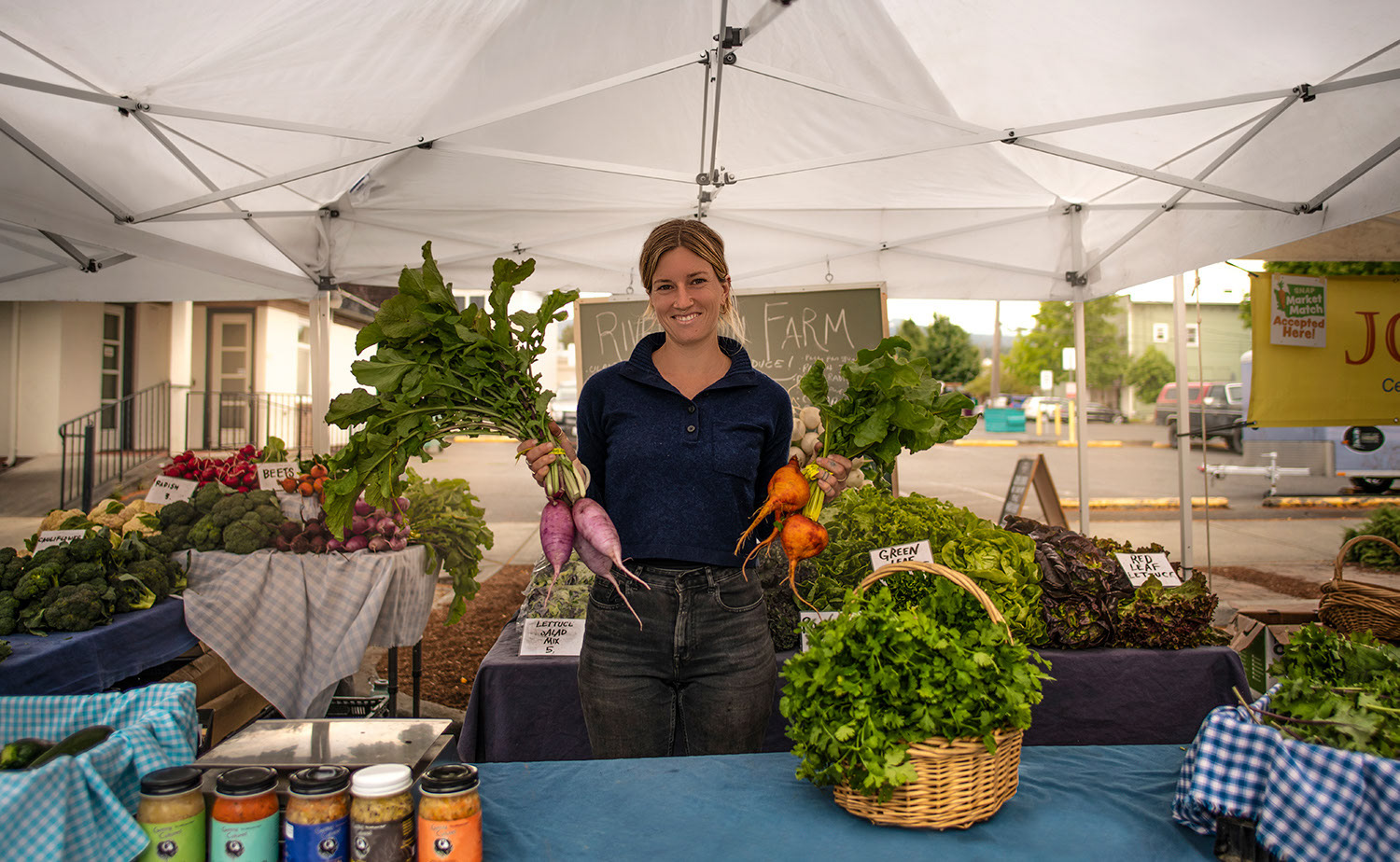
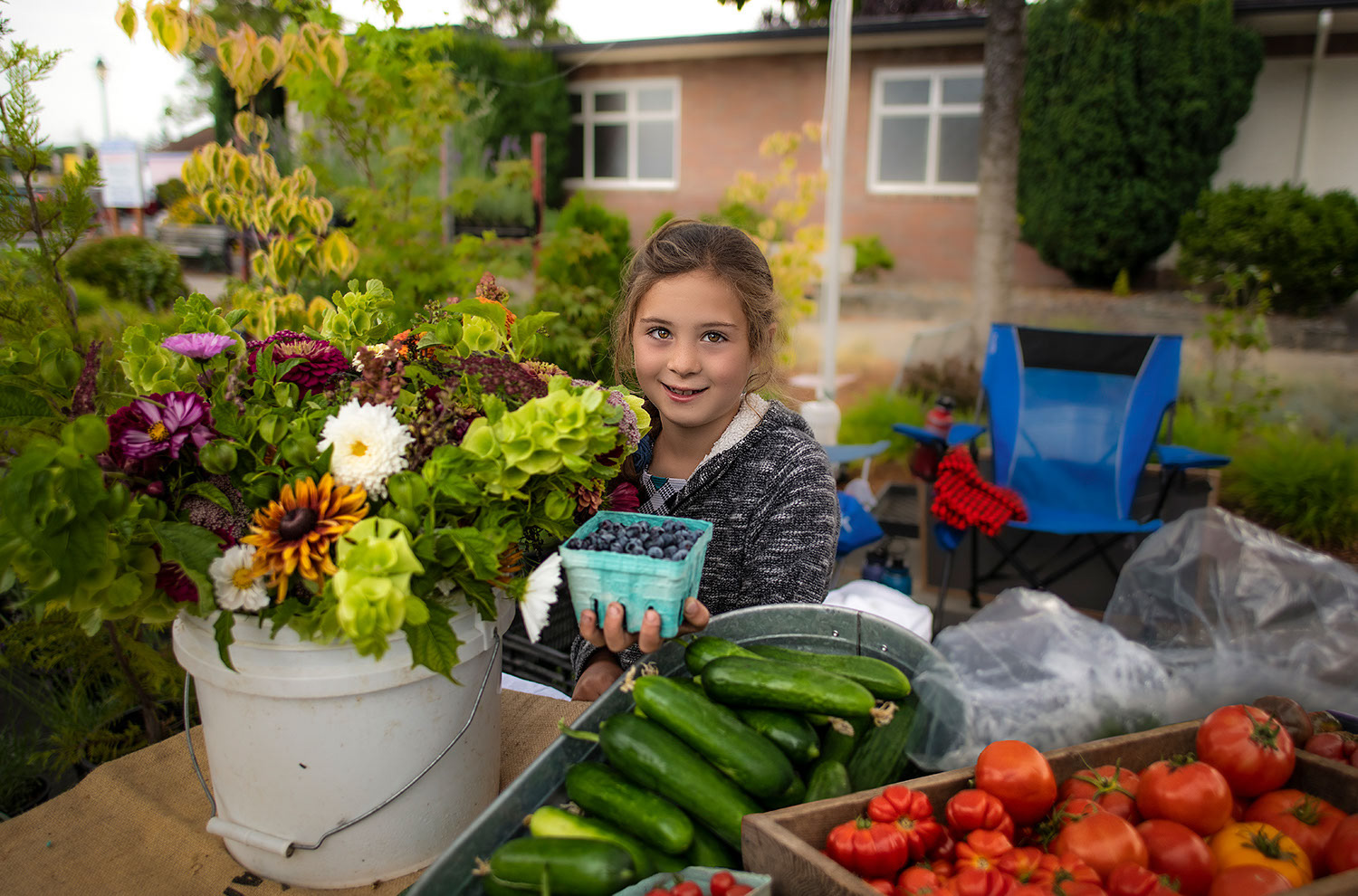
Carol Johnson. Meadow Muffin Farm. (recorded interview)
Carol Johnson
"We purchased the property in July 1987, 34 years ago. We began building new fences and making plans to build a barn, which took 2 years. Horses moved to the property in September 87 and wintered on a 2 acre parcel.

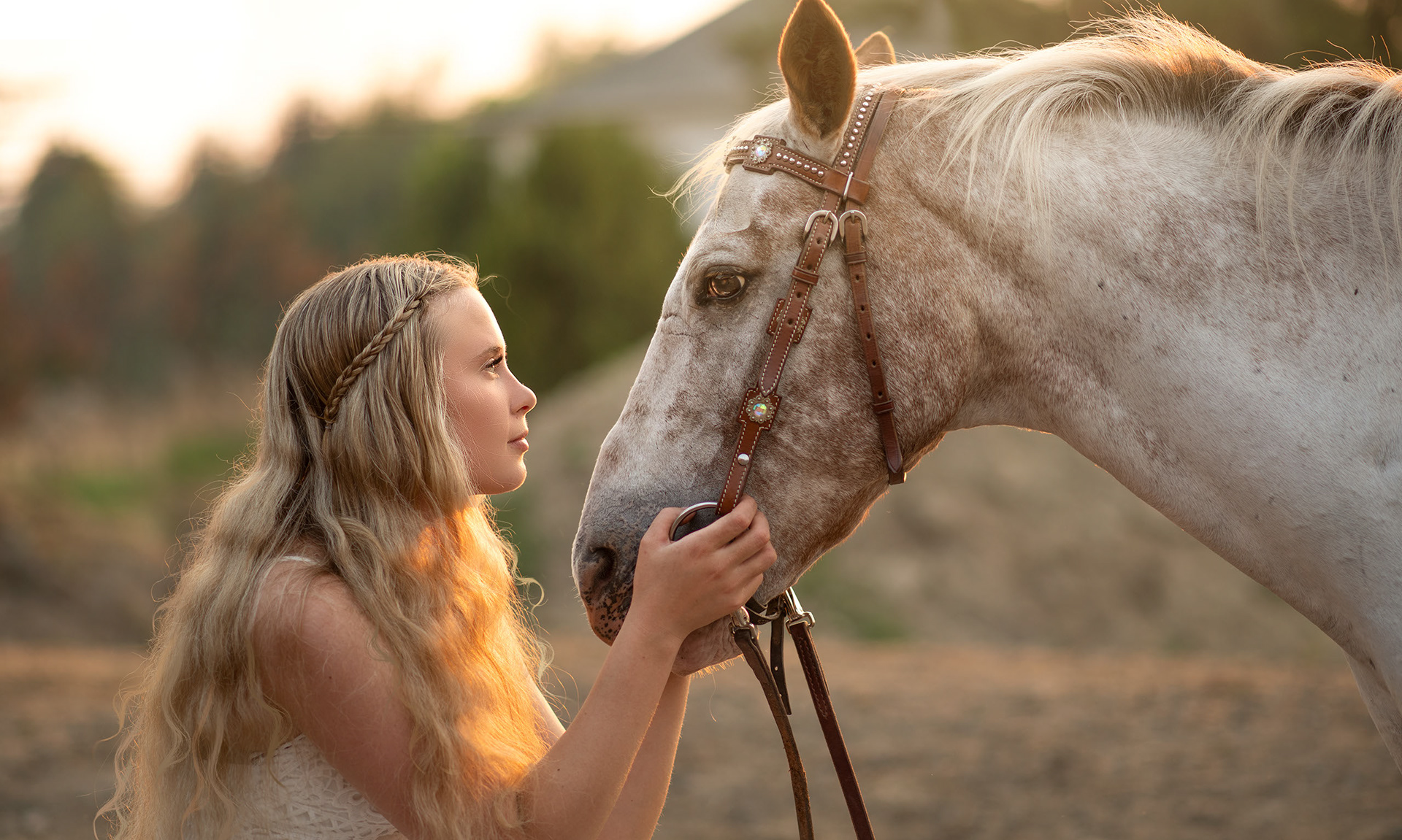
I have loved horses my entire life! I could not imagine living without horses! My Mom's father loved horses and died in a horse accident when Mom was only 5 years old. Relatives told me about his love of horses and I saw many pictures of him with them. My parents did not have any interest in horses so I believe that I inherited a horse gene from my Grandpa! As a little girl I lived for the County Fair and spent my carnival ride money on the pony rides. When I wasn't riding the ponies, I was petting them tied to the hitching post. If I was ever lost, just look for a horse and that's where you would find me! After we moved to Port Angeles, my Dad met a couple in Joyce and they let me ride their horses through high school. I spent many hours trail riding and camping with horses in the National Park, which are my favorite memories. There were 6 horse-happy kids wandering around on horses in the Olympics before cell phones, with no chaperone, having the time of our lives. We were perfectly safe with no worries! I did not own my first horse until 1965, so from 1957 till 1965, I rode any horse that an owner would let me on!
People have farms for various reasons, raising gardens for food, flowers, animals for food or just as pets. I wanted a farm with horses and never dreamed I would start acquiring horses through rescue, purchase and accepted horses being rehomed. The horses rescued were not a charity rescue and there were no donations, they just became part of the family. The more horses I had the more I realized I needed to give them a purpose. The farm has been open for kids to ride horses for 4H and High School Equestrian Team based on availability of horses that are suitable for the rider's skill level. Sharing the horses with youth riders gave me the opportunity to enjoy the horses' accomplishments along with their riders.
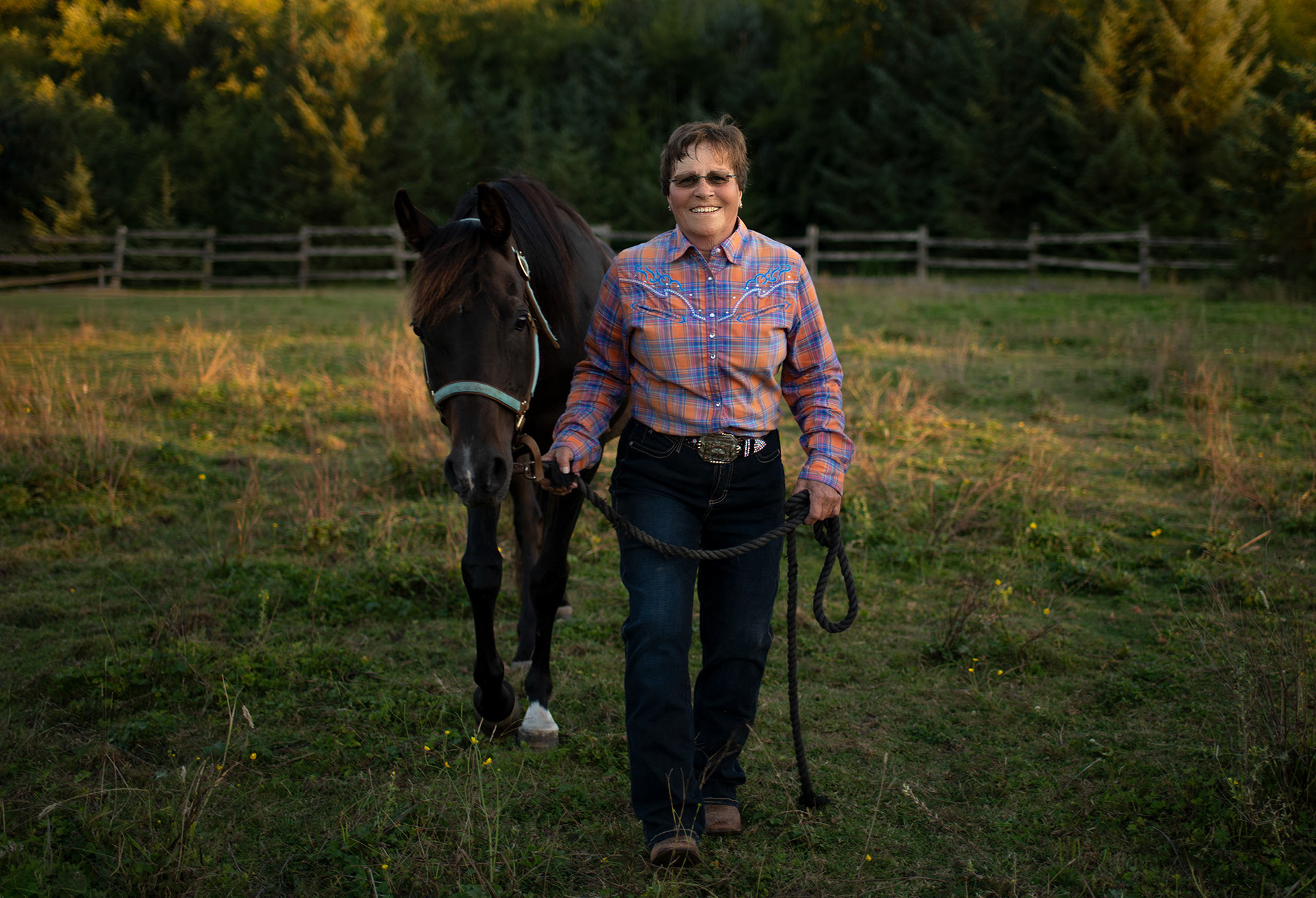

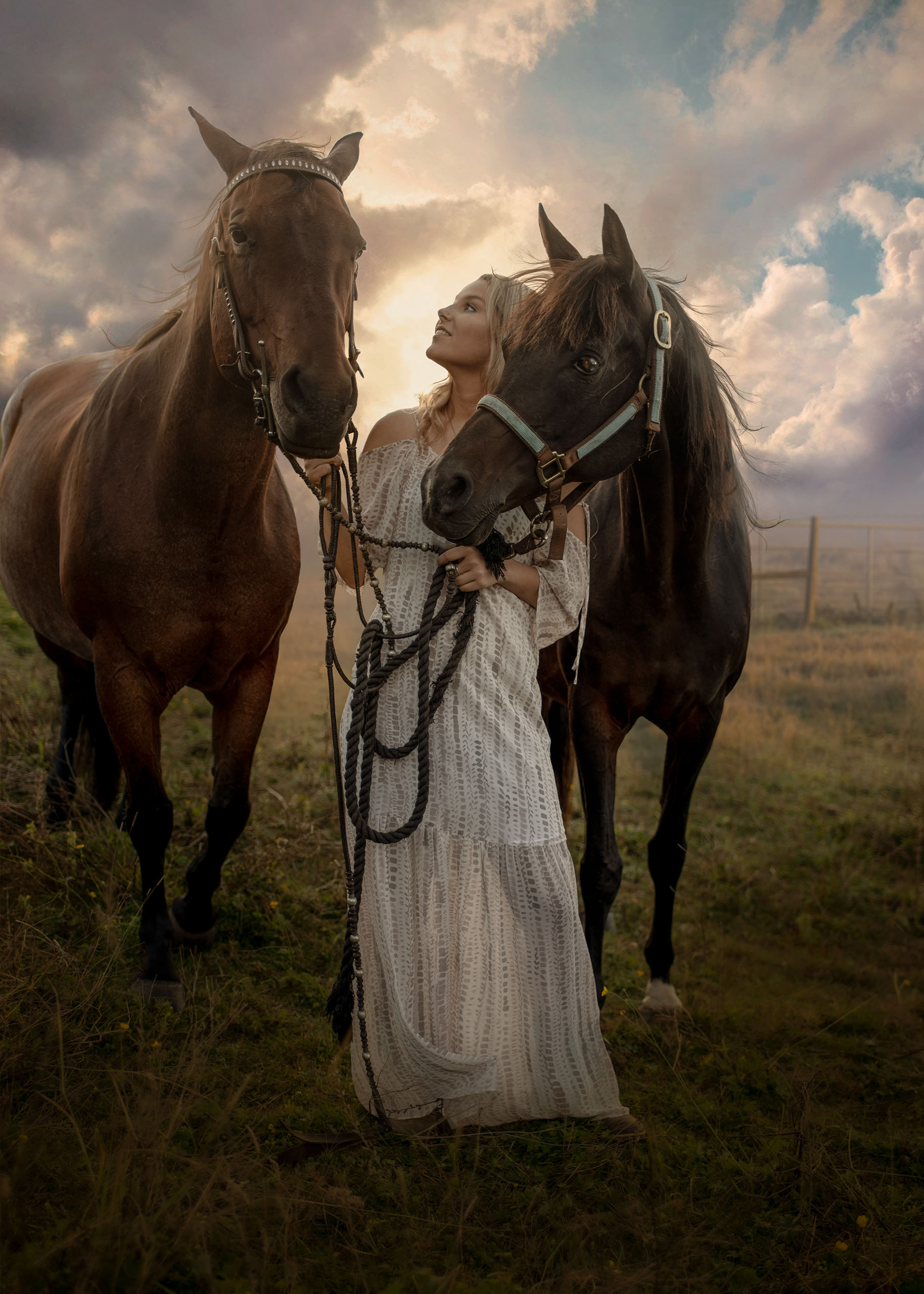
The horses were happy and so were the kids! All that was asked is that the kids loved and respected the horses and followed rules for safety there was never a cost. Parents got involved because of the regular riding at the barn, weekly practices at other arenas and soon we were going to horse shows, camping on the show grounds and becoming one big happy family. The school bus stopped at the barn gate so the kids rode almost everyday. The horses came to recognize that the Yellow School Bus meant their rider had arrived. It has been 16 years and today there are 24H riders, and 3 adult girls riding at the barn. One of them has been riding at the barn for the 16 years and still shows at open horse shows as an adult. I don't see any changes in the near future!"
"My experience at Carols' barn is she makes every little girls dream come true by sharing her farm, her horses and her experience to make you in a strong, independent and caring individual. There’s not many people in this world with a heart of gold like Carol" Paige Horstman
A special thank you to: Rosie Zwanziger and Johnson family; Nataliya Nasonova, Natalie Tripp, Laci Fries, Layla & Macey Parker, Aurora Tobin, Linda Nasonova and Ethan Corey. A special thank you to the accommodating parents: Trisha Parker, Vanessa Tobin, Minda Corey, Nataliya Nasonova, Pam Fries; Clara, Natalie and Sarah Hill, Katy and Robert Nelson; SisterLand Farms: Sam, Jenson, Kat, Katy, Cassie and Christy; Carol Johnson, Paige Horstman and Taylor Lynn; Cindy, Azuriah, Joshua, Phineas and Zishe Sylvester, Paul, Jena, Nathan West, Theresa Bjornes, Susan & Kevin Lee Magner, Sidney Barthell, Noel Forest Price, Galina Shipova and Carl Honore.